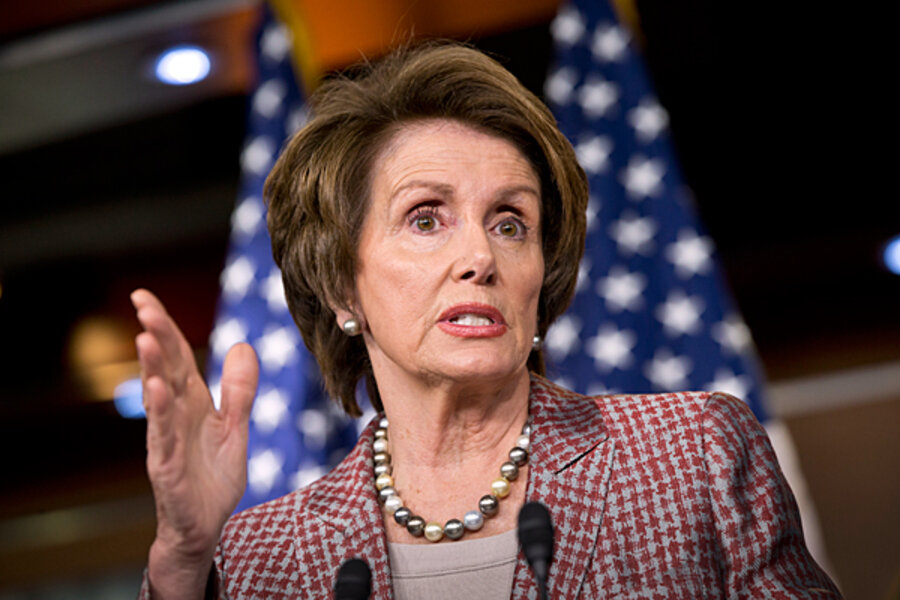Life after 'sequester': Does federal budget have $1 trillion in fat to cut?
Loading...
The newly launched "sequester" federal spending cuts are large – large enough to total more than $1 trillion if they were to stay in place for 10 years.
That won’t happen, because no one likes the sequester’s arbitrary approach to the budget, in which all programs are supposed to be cut by the same percentage.
But deficit hawks say that deficit savings of at least that magnitude are needed to avoid a dangerous buildup of government debt.
Which raises the question: How hard would that be?
Conflicting answers to that question are as close as the latest TV sound bites or polls of public opinion.
On Thursday, House Speaker John Boehner (R) of Ohio implied fiscal discipline isn’t that hard. He called for an even more aggressive goal: getting the deficit down to zero in 10 years (something the sequester doesn’t achieve). He said House Republicans will leave the sequester in place until it is supplanted by a balanced-budget plan.
House minority leader Nancy Pelosi (D) of California, in her own Thursday press briefing, said such spending cuts hurt middle-class families, and said new tax revenue must be part of the solution.
“They won't touch these tax breaks for the wealthiest and the special interests,” she said, complaining about the Republican position.
Part of this debate, of course, is about such different partisan viewpoints. But, whether one is a deficit hawk or not, it’s fair to say that imposing this restraint is no cakewalk.
The $1.2 trillion in sequester cuts (over the course of a decade) would equal nearly $1 for every $10 in the discretionary portion of the budget, where most of the sequester cuts fall.
Critics counter that what Washington calls a “spending cut” is really just a lowering of expected increases in spending. That's true under the sequester – up to a point. Yes, the nominal dollar amount of discretionary spending would be higher in 2022 than in 2013 – by nearly $200 billion.
But discretionary spending would actually fall significantly, year-over-year, in both 2013 and 2014, the Congressional Budget Office (CBO) says. And even though spending would then start ticking upward, it wouldn’t keep pace with projected inflation of about 2 percent a year – let alone with population growth of about 1 percent per year, the CBO adds.
Still, most experts agree that there’s fat to be cut. While private-sector productivity chugged ahead at an annual pace of 1.5 percent or better during the 1990s, public-sector productivity held “almost flat,” according to a 2006 study by the consulting firm McKinsey.
The question is where to cut, how to cut, and how fast.
Sen. Tom Coburn (R) of Oklahoma has made it part of his job description to document examples of waste and duplicated effort in federal agencies.
In “just the past two years, the Government Accountability Office (GAO) has identified more than 1,362 duplicative programs accounting for at least $364.5 billion in federal spending every single year,” he wrote in a February letter to the White House Office of Management and Budget.
That doesn’t mean $365.5 billion can be a quick and easy annual savings. Rather, policy experts say it means some of the programs could be consolidated and some eliminated.
Improving worker productivity, such as through smartphone apps and other technology, could cut federal payroll costs substantially. Even President Obama’s own budget director agreed about that in a 2010 speech.
But unlike the typical business, like a restaurant, vast amounts of federal spending have nothing to do with personnel. Vast sums in the budget simply pass through to individual beneficiaries of programs like Social Security, to others who provide benefits (hospitals and doctors under Medicare), or go to states in grants.
For example, spending on discretionary programs – which include national security and a range of domestic programs from transportation to education – would total $12.6 trillion during the next decade if the sequester remains in effect. If you wrap in mandatory programs like Social Security, total federal spending during those years rises to about $45 trillion, according to the CBO.
In sum, most budget experts say taming deficits in the long run will have to mean tackling growth in mandatory programs (especially Medicare, Medicaid, and Social Security), as well as economizing in the discretionary side of the budget.
Many economists warn against imposing budget austerity too fast, lest it harm an economic recovery in which unemployment still hovers near 8 percent of the work force.
At the same time, many others say budget discipline is needed, and can start now at least to some degree.
Senator Coburn, for his part, has offered one detailed path toward trillions of dollars deficit reduction. His plan warns of "tough choices," beyond just cutting waste and inefficiency.
The nonpartisan Committee for a Responsible Federal Budget says that setting an ambitious goal for fiscal discipline would pay dividends in economic growth.
“An additional $2.3 trillion of deficit reduction would not only put debt on a downward path toward 68 percent of GDP in 2023, but would also increase the size of the economy by almost 1 percent in that year,” the group says, citing CBO numbers.
By contrast, the sequester cuts, by themselves, won’t be enough to keep the national debt from rising as a share of gross domestic product – from about 73 to 77 percent by 2023.







